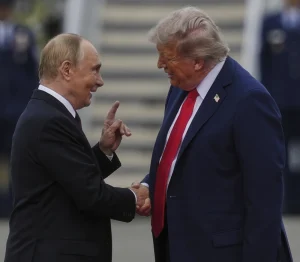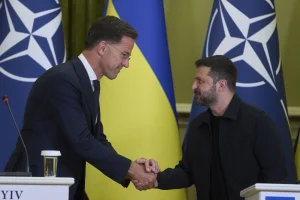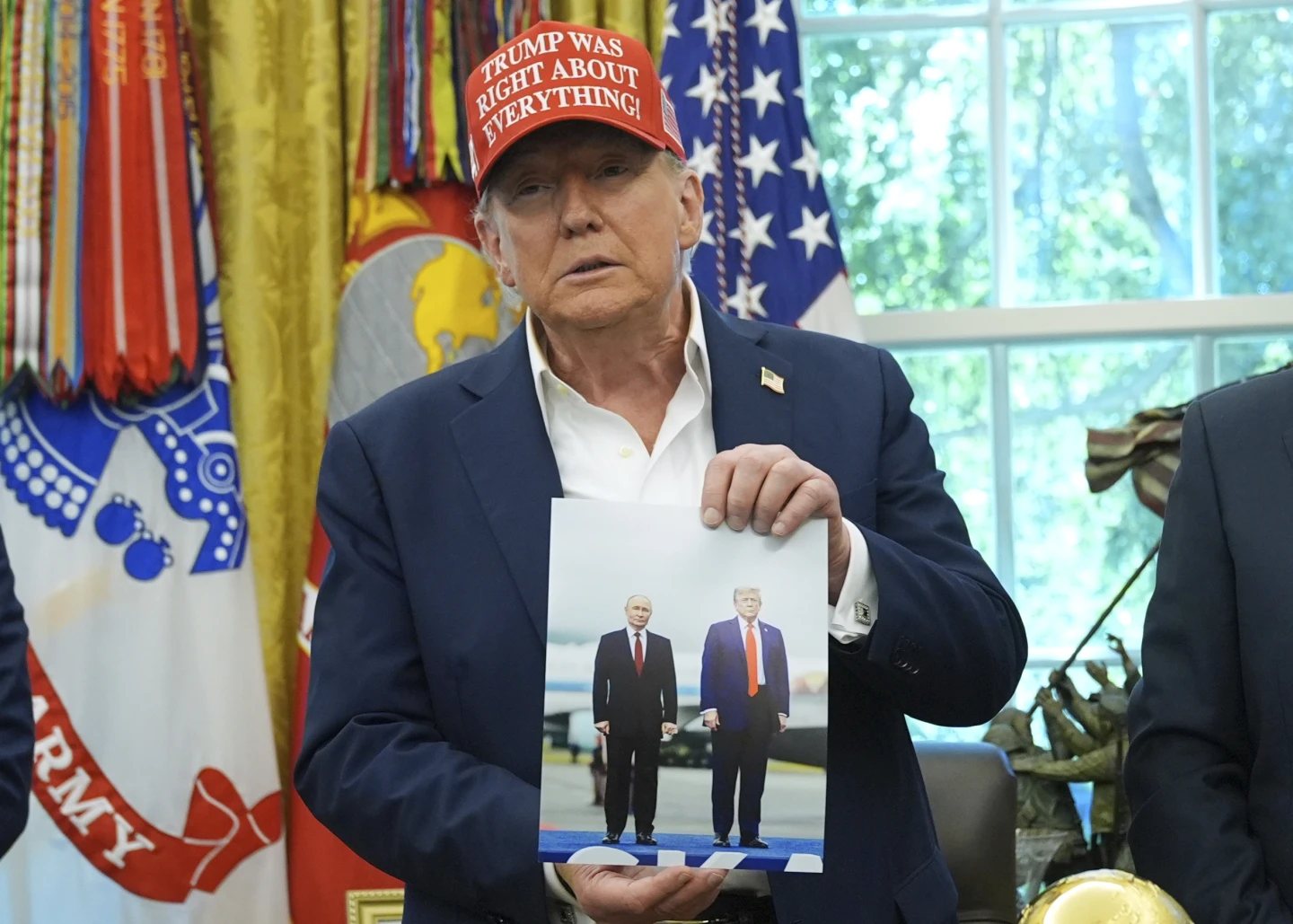US President Donald Trump started the week declaring a diplomatic breakthrough in his bid to prod Moscow and Kyiv closer to peace, announcing he had begun arranging for direct talks between Russia’s Vladimir Putin and Ukraine’s Volodymyr Zelenskyy.
Four days later, the Republican president’s optimism has diminished. Russia’s top diplomat made it clear Friday that Putin will not meet with Zelenskyy until the Ukrainians agree to some of Moscow’s longstanding demands to end the conflict.

It is a stinging setback for Trump, who had been touting his diplomatic blitz as resulting in indisputable momentum for a deal to halt a conflict he vowed as a candidate to end on Day One in office, says AP.
Trump said Friday he expected to make a decision on his next actions in two weeks if direct talks are not scheduled. He raised the possibility of imposing new sanctions or tariffs on Russia, a threat he has previously floated but not followed through on.
“We’re going to see whether or not they have a meeting,” Trump told reporters in an Oval Office appearance. “It’ll be interesting to see. If they don’t, why didn’t they have a meeting, because I told them to have a meeting. But I’ll know what I am going to do in two weeks.”
Trump announced Monday that he had begun making the arrangements for a Putin-Zelenskyy meeting soon after concluding White House talks with Zelenskyy and European leaders as well as speaking by phone with Putin.
European leaders cheered the president’s tone at the White House meeting, when he made vague promises to back European security guarantees for postwar Ukraine.
Trump also appeared to ease European anxiety heightened by his comments after his Alaska summit with Putin days earlier, when he appeared to tilt toward the Russian leader’s demand for Ukraine to give up land seized by Russia. The European leaders even offered guarded optimism that Trump was making headway after he announced his plans for direct talks, followed potentially by three-way negotiations involving him.
But uncertainty has grown in recent days about Putin’s commitment to Trump’s peace-making efforts as Russian officials raised objections about cornerstones of the nascent proposals on the negotiating table.
Russian Foreign Minister Sergey Lavrov said Putin is ready to meet with Zelenskyy to discuss peace terms but only after key issues first are worked out by senior officials. That could involve a protracted negotiating process because the two sides remain far apart.
Ukraine wants Western security guarantees to deter any postwar Russian attack, and US and European officials are scrambling to come up with detailed proposals of how that might work. But Lavrov said earlier this week that making security arrangements for Ukraine without Moscow’s involvement was pointless.
Putin, meanwhile, on Friday made a visit to Sarov, a closed city about 370 kilometres (230 miles) east of Moscow that has served as a base for Russia’s nuclear weapons programme since the late 1940s. The visit offered a not-so-subtle reminder that Russia is one of the world’s foremost nuclear powers.
Even as Trump touted his plan for peace talks, Russia on Thursday launched one of its biggest aerial assaults so far this year, focusing on western Ukraine in the barrage of 574 drones and 40 ballistic and cruise missiles.

“The Russians are trying to do anything to avoid the (summit) meeting. The issue is not the meeting itself, the issue is that they do not want to end the war,” Zelenskyy said Friday alongside NATO Secretary General Mark Rutte, who was visiting Kyiv.
Rutte said Trump wants to “break the deadlock” with Putin and engage the United States in providing security guarantees for Ukraine.
Rutte explained that guarantees under discussion would rest on two “layers.” The first, to take place after a peace deal or long-term ceasefire, would focus on making the Ukrainian armed forces “as strong as possible.” The second would involve security commitments provided by Europe and the United States.
The European Union’s foreign policy chief said Friday that the possibility of Ukraine ceding land to Russia as part of a peace deal to end their three-year war is “a trap” set by Putin.
The Russian leader is demanding Ukrainian concessions in return for halting his army’s invasion, but granting him those demands would amount to rewarding the country that started the fighting, Kaja Kallas, Vice-President of the European Commission, said.
The recent talk about handing Putin concessions is “exactly the trap that Russia wants us to walk into,” Kallas said in an interview with the BBC.
“I mean, the discussion all about what Ukraine should give up, what the concessions that Ukraine is willing to (make), whereas we are forgetting that Russia has not made one single concession and they are the ones who are the aggressor here, they are the ones who are brutally attacking another country and killing people,” she said.
“Russia is just dragging feet. It’s clear that Russia does not want peace,” Kallas said. “President Trump has been repeatedly saying that the killing has to stop and Putin is just laughing, not stopping the killing, but increasing the killing.”


